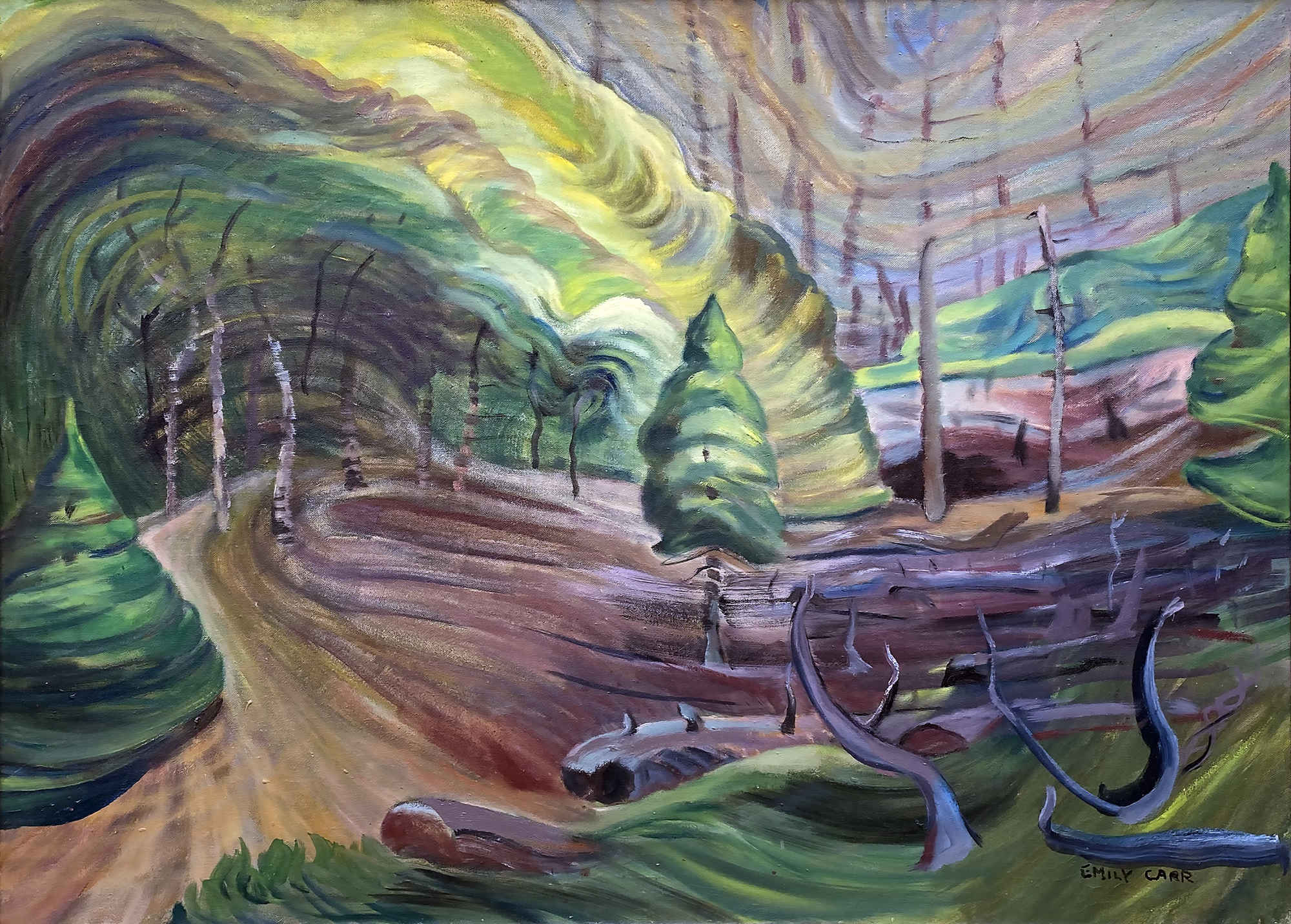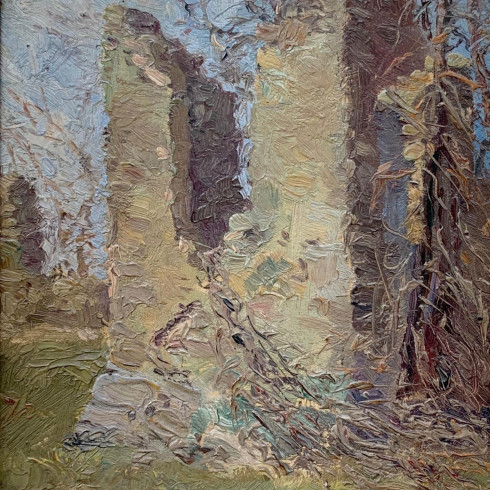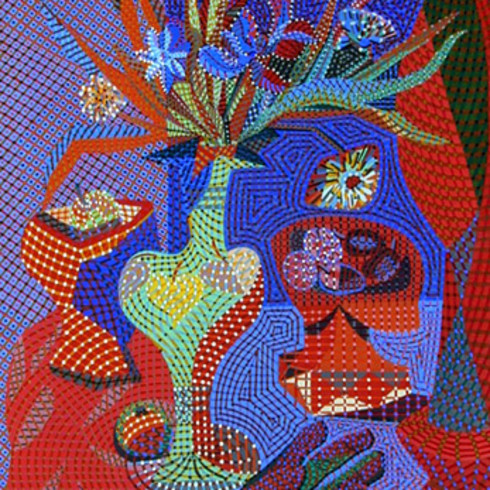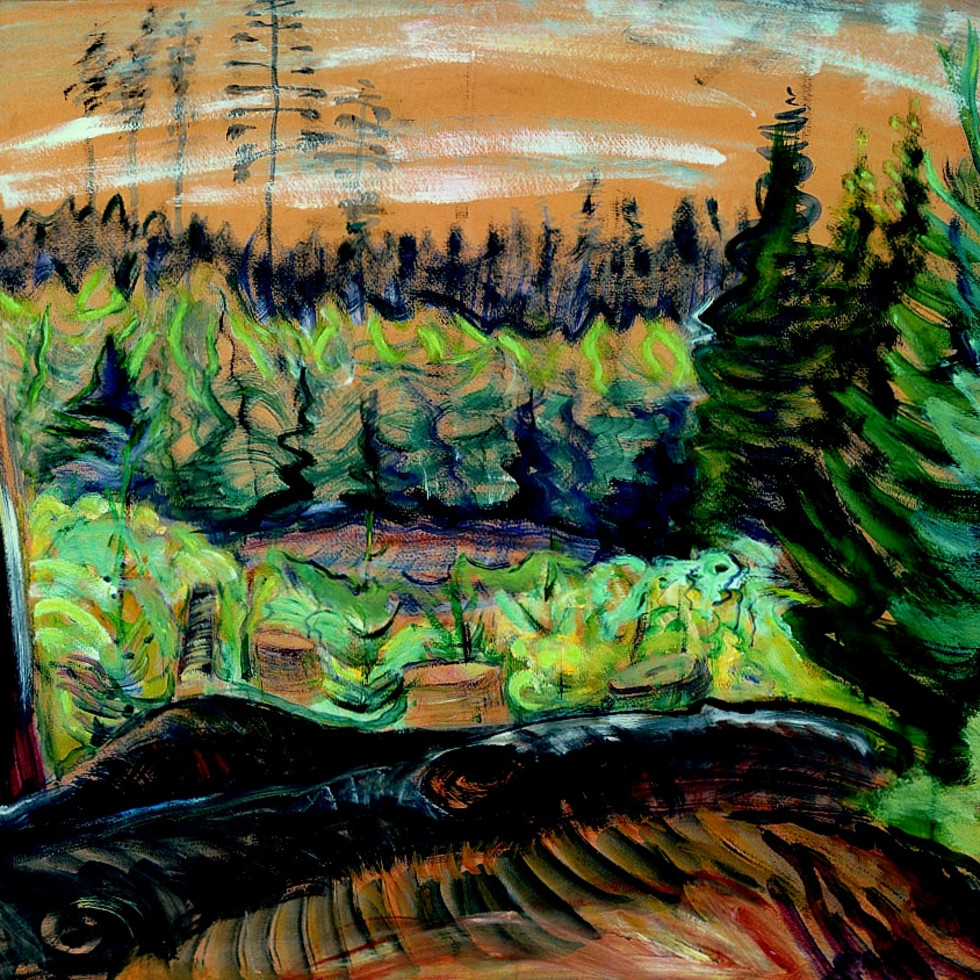Notable Sales
The Bounce of Spring, 1936-1937 (circa)
61 x 83.8 cm
Provenance
Christie’s Canada, Montreal, 2 May 1973, lot 69 as The Surge of Spring.
Laing Galleries, Toronto, as B.C. Forest Landscape.
The Collection of Mitzi and Mel Dobrin.
Exhibitions
Vancouver, Vancouver Art Gallery, October 1941, Emily Carr Exhibition, as The Bounce of Spring
Montreal, Galerie Walter Klinkhoff Inc., Emily Carr (1871-1945) Retrospective Exhibition, September 14 - September 22, 2002, cat. no. 23.Literature
Palette [J. Delisle Parker], “In World of Art Thirty Canvases Exhibited at Gallery by Emily Carr,” Vancouver Province, 23 October 1941.-Charles C. Hill
—Lawren Harris was not the sole influence on Emily Carr’s painting in the late twenties and Shadbolt has clearly outlined how the lessons learned, from the Seattle artist Mark Tobey in September 1928 and from books she read, helped Carr to evolve a new language for her art. Yet Harris remained a sounding board for Carr’s discouragements and questioning. In late fall 1929 he wrote “You see, your work is very individual, and so far as I know, you have the feeling of the West Coast beyond anyone – and have and will find an equivalent for it in & through paint. How about leaving the totems alone for a year or more? I mean, the totem pole is a work of art in its own right and it is very difficult to use it in another form of art. But, how about seeking an equivalent for it in the exotic landscape of the island and coast, making your own form and forms within the greater form.”
Slowly nature began to envelop the totems and forest interiors became a constant subject over the next decade. Encouraged by Harris, Carr’s art evolved from a geometric, formal treatment as she pushed “the forms to the limit, in volume, plasticity and precision, and relationship in one unified, functioning greater form which is the picture.” In her journal, published as Hundreds and Thousands, Carr wrote on 4 April 1934, “I woke this morning with ‘unity of movement’ in a picture strong in my mind…. I see it very strongly out on the beach and cliffs. I felt it in the woods but did not quite realize what I was feeling. Now it seems to me the first thing to seize on in your layout is the direction of your main movement, the sweep of the whole thing as a unit. … a pathway for the eye and the mind to travel through and into the thought...” And on 12 June 1935, “I figure that a picture equals a movement in space… The picture side of the thing is the relationship of the objects to each other in one concerted movement, so that the whole gets up and goes, lifting the looker with it, sky, sea, trees affecting each other.”
In 1932 Carr adopted a new painting technique, oil paint diluted with gasoline on paper. The new medium and support provided her with the opacity of oil paint and the fluidity of watercolour and a flatness of surface that enabled her to paint in broad, sweeping gestures. As Shadbolt observed, her brush stroke became the agent of the dissolution of form, the animating movement of the picture sweeping up and into the picture space. There is no longer a central focus, but forms join the compulsive flow of energy. Nature now signified the animating force immanent in all creation, an oceanic world of continuous ebb and flow.
On 22 October 1936 Carr wrote, “I fought against starting a canvas for weeks. I wanted to but I was afraid; did not know where to begin…. Finally I did get out the sketches and sat before them and thought. The canvas was an upright and the subject a horizontal. There were three clamps fixing it to the easel. Back and forth through the picture room I went measuring other canvases, and then … I spiritually licked myself. Got up and unclamped the three clamps, turned the canvas and suddenly seized the charcoal and swung in.” The resultant canvas was Study in Movement (Art Gallery of Ontario), originally titled by Carr Movement in Woods, a title equally appropriate for The Bounce of Spring.
Is The Bounce of Spring the “exultant woods” Carr wrote she was painting on 20 April 1937? The woods swing and sing with great joy, from the lower right, along the path, under the overarching foliage to the light filled clearing upper right. While painted in oil on canvas, in no other picture did Carr attain the same fluidity and transparency of her oils on paper. Carr’s title, The Bounce of Spring, effectively expresses the energy and joy Carr found in nature in the later years of her painting career.
Charles C. Hill

















